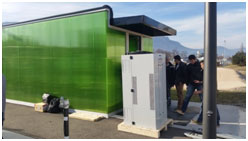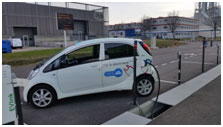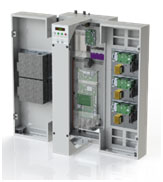Hub Energy, an IRT Nanoelec PULSE program project is developing a bidirectional battery charger for stationary (home) and mobile (vehicle) use. The charger will meet the needs of energy-plus and off-grid homes by communicating with other devices in the home to make smart operating decisions (charger or backup power mode) depending on the energy available from all sources.
Manufacturers from a variety of industries are showing an increasing interest in vehicle-to-grid and vehicle-to-home solutions, especially since Tesla released its Powerwall home battery. And, in the race to boost battery yields, IRT Nanoelec is helping its partners adopt SiC (silicon carbide) power components for their products’ power conversion needs and familiarize themselves with building management networks for better energy management.
The project consortium’s three members (Schneider Electric, IES, and Leti) have been working on a prototype with:
– a modular architecture capable of handling up to 80 kWh (enough to charge a Renault Zoe electric vehicle in just fifteen minutes)
– two converters (AC/DC and DC/DC); the AC/DC converter will be compatible with electricity grids worldwide (50 Hz/60 Hz; 110 V, 230 V, or 480 V, and single- or three-phase)
– Fourteen power management boards
– A communications circuit so that the Hub can use a wide range of IoT and smart city protocols; this will pave the way for experimentation and prototyping of future services







